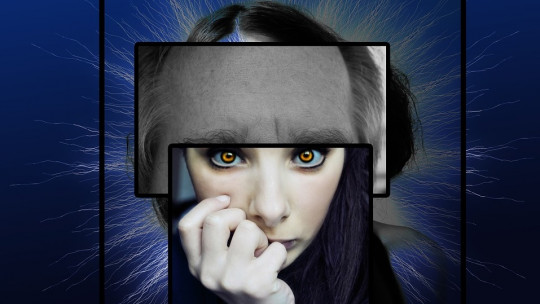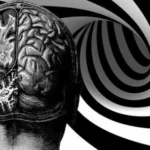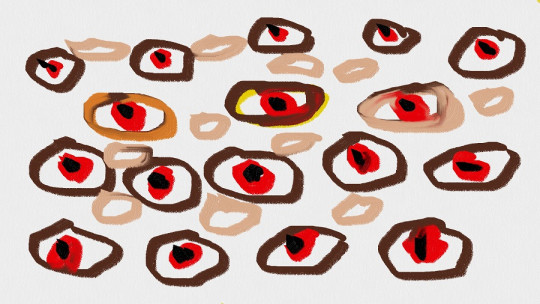
Schizophrenia is one of the best-known psychotic disorders among most people, and one of the most socially stigmatized mental disorders throughout history. Although the existence of schizophrenia is currently considered a single diagnostic entity, the truth is that until a few years ago it was divided into several types. Among them is paranoid schizophrenia which we are going to talk about in this article explaining its associated symptoms, its treatments and its possible causes.
Schizophrenia
Schizophrenia is a psychotic mental disorder characterized by the presence for at least six continuous months of symptoms in which hallucinations, delusions, language alteration, catatonia, affective flattening or mood alterations, impoverished thinking or lack of motivation occur for at least one month, appear at least one of the top three.
These and other symptoms are usually grouped into two groups: positive symptoms, which involve an addition of some element to normative behavior (such as hallucinations, language derailments, hallucinations or restlessness) and negative symptoms or those that imply a decrease or deficit. of the subject’s abilities and capacities (such as emotional flattening, avolition or alogia or mental impoverishment).
But the presentation of symptoms is not the same for all patients with schizophrenia. In fact, different groups of people can be found who manifest similar symptoms to each other and whose alterations are very different from those of others, which is why different groups or types of schizophrenia were traditionally formed and why even today (despite that the different types of schizophrenia have been eliminated in the DSM, including the one we are dealing with in this article) Some authors believe that rather than schizophrenia we should talk about psychotic spectrum disorders
Paranoid schizophrenia: main symptoms
Paranoid schizophrenia is perhaps the best-known type of schizophrenia and prototypical of this disorder. It is considered as such that type of schizophrenia characterized by a predominant presence of positive symptoms, with mainly psychological symptoms in which auditory hallucinations and delusional ideas appear. The subject does not usually present other alterations common in other types of schizophrenia, such as catatonia, impoverishment of thought or alterations in speech or movement.
Likewise, we are faced with the type of schizophrenia that causes the least cognitive impairment (generally there are no negative symptoms) and what better response to treatment it usually has.
We generally find that the hallucinations of patients with this disorder are auditory, often in the form of third-person voices that speak about the subject and which tend to have a pejorative and threatening content for the subject. These hallucinations and their content are therefore usually of a persecutory nature the patient feeling that something or someone intends to harm them and can trigger reactions of fear, anxiety or aggression in them (although contrary to what popular belief dictates, the possibility of unexpected aggression is relatively low and usually occurs in patients who do not follow treatment and high impulsivity).
The subject tends to become delirious due to these hallucinations, forming a distorted narrative of reality based on said perceptions. The subject may form the belief that he or she is being persecuted or possessed Delusions of grandeur or even messianic type may also appear, considering oneself a divinity or someone with great powers or in possession of a truth that no one else knows. It is not uncommon that delusions of stealing or mind reading may also appear.
Causes
The exact causes of schizophrenia, whether we consider it as a single disorder or separate them into different typologies, remain unknown to this day. This does not mean that there are not different models and hypotheses in this regard, some of which are the following.
From a biological perspective, the existence of genetic factors has been proposed as predisposing the disorder, which generate problems of differentiation and neuronal migration throughout development. In people who suffer from schizophrenia some functional and anatomical alterations are observed at the brain level that have been proposed as an explanation for the manifestation of symptoms. For example, the existence of a greater volume of the cerebral ventricles and structures such as the hippocampus and amygdala is observed, along with a lower than usual blood supply to the frontal lobes and the existence of asymmetries between the temporal lobes.
In this sense, the model of the three networks is also contemplated, in which we would find a hypofunctional neural network at the level of the frontal structure, a hyperfunction of limbic structures and the continued activation of the so-called default network, a neural network that would be activated in absence of the activity of another network (only this or the other can be active, not both at the same time) and that in people with schizophrenia it would be permanently active (which makes it incompatible for the usual neural networks to activate).
Possible causes of symptoms
At the level of symptomatology, one of the best-known hypotheses is the one that tells us about alterations in dopaminergic systems: positive symptoms would be related to an excess or hyperfunction of the mesolimbic pathway while negative symptoms would be linked to a deficiency of this hormone in the mesocortical pathway. With regard specifically to the paranoid subtype, the most visible and prominent alteration would occur at the mesolimbic level, and there may be no alterations in the mesocortical pathway.
A certain link with the season of birth has also been observed, with the prevalence of this disorder being higher in children born in winter. Other theories speak of a possible incidence of some viruses or diseases during pregnancy that in some cases could alter the development of the fetus, such as the flu (something that would relate it to the previous theory).
At a psychological level, it is indicated that biological factors would imply a permanent vulnerability, which could be activated depending on the possibility or impossibility of adapting to the life circumstances and stressors that the subject faces.
Finally, regarding the phenomenon of hearing voices that people with paranoid schizophrenia usually experience, in addition to the aforementioned excess of dopamine in the mesolimbic pathway, it has been speculated with a disconnection between the prefrontal and the regions that generate speech, the voices being self-generated mental content that is attributed to external causes: Disconnection would cause the verbal content not to register as part of one’s own conscious functioning.
Treatment
Although the symptoms of paranoid schizophrenia may seem more spectacular and striking than those of other types, the truth is that We are facing one of the forms of schizophrenia that has the best prognosis (given that they do not have as much risk of cognitive deterioration as other subtypes with negative symptoms) and that they react better to treatment. Despite this, there is currently no curative treatment for this disorder, but rather the therapies and treatments used focus on the control of symptoms and the prevention of psychotic outbreaks.
Drug intervention
At a pharmacological level, people who suffer from it are treated with antipsychotics or neuroleptics, which aim to correct excess dopamine in the mesolimbic pathway by blocking its receptors. Although in paranoid schizophrenia there are usually no negative symptoms, the use of atypical ones is recommended as they have fewer side effects than the classic ones. Medication will be necessary on an ongoing basis, being very important not only in the treatment of a psychotic outbreak but also in the prevention of new outbreaks.
Intervention with psychological therapy
On a psychological level, Psychoeducation is essential in the first place in order to facilitate adherence to treatment and understanding of the symptoms and alterations that are being suffered. The involvement and psychoeducation of the family and the close environment is also essential, which must understand the nature of the problem, possible indicators of the future appearance of an outbreak and guidelines to use if one arises. Empathy and active listening to both the subject and the environment are essential, resolving doubts and giving space to the expression of thoughts and emotions.
Regarding the psychological treatment of hallucinations, one of the therapies that can be used is Focusing therapy on the voices of Slade, Haddock and Bentall The way this therapy works is based on the patient gradually focusing their attention on different elements of the voices they hear, delving deeper into them so that little by little the subject stops attributing them to external elements or entities and reattribute them to your own mental content. It usually begins by focusing on the characteristics of the voice in question (tone, volume, whether the voice is male or female…), to continue working on the content and finally on the beliefs that the person has regarding them.
Although it is something that most professionals already know and should take into account, it is worth mentioning that it is essential not to trivialize or insinuate that the voices themselves are something non-existent or their imaginations: the subject really perceives them as something external, Even if they are mental content that is not attributed to oneself, it is something that can generate a high level of suffering. It is also very useful to make the subject see that the voices, whatever they say, cannot cause real harm.








